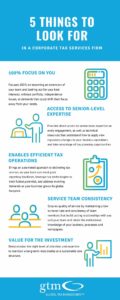This is the second of two blogs following our published article in Tax Notes, “GILTI, FDII, and BEAT: Thinking Ahead to First-Quarter Provision.”[1] In the first blog, we covered a detailed GILTI calculation. In this second blog, we cover §951A to introduce the issues with tested loss CFCs, a practical example of the basketing of §78 Gross-Up on GILTI, and things to consider before you begin GILTI tax planning. Even though many aspects of the GILTI tax remain unresolved, companies should begin re-examining their international structure and operations to best take advantage of the international reforms in the TCJA. GILTI Section 951A Section 78 Basketing
Tested Loss CFCs
Let’s first quickly review IRC §951A to introduce the issues with tested loss CFCs and set the stage for the rest of the post. The GILTI inclusion of a U.S. shareholder under IRC §951A is the excess of that shareholder’s net CFC tested income over its net deemed tangible income return. Net CFC tested income is the excess of the aggregate of the shareholder’s pro rata share of each of its CFC’s tested income over the aggregate of each CFC’s tested loss. Tested income and tested loss are determined first at each CFC, and then the U.S. shareholder has net CFC tested income to the extent that the sum of the tested incomes exceeds the sum of the tested losses.
A CFC’s tested income is the excess (if any) of:
- Gross income (determined without regard for effectively connected income, high-taxed subpart F income, related-party dividends, and foreign oil and gas income); over
- the deductions (including taxes) properly allocable to such gross income under rules similar to the rules of section 954(b)(5) (or to which such deductions would be allocable if there were such gross income).
Tested loss is the converse—any excess of 2 over 1. There is no carryforward of excess tested losses either at the CFC or U.S. shareholder level.
Net Deemed Tangible Income Return is 10% of the aggregate of the U.S. shareholder’s pro rata share of the qualified business asset investment (QBAI) of each of its CFCs, reduced by interest expense if the corresponding interest income is not included in tested income (i.e. interest paid from a CFC to a third party or up to the U.S. parent). As with tested income, QBAI is determined at the CFC level. QBAI is the average aggregate adjusted bases (determined quarterly) in specified tangible property which is depreciable under IRC § 167 and used in the CFC’s trade or business. Specified tangible property is defined as “any property used in the production of tested income.”[2]
The specific reference to tested income and not tested loss in the definition of specified tangible property means that a CFC with a tested loss (allocable deductions exceed gross income) does not benefit to account for the QBAI in the loss year. This interpretation is confirmed in the Conference Committee Report[3] as well as the legislative history of §951A.[4] The result is a cliff effect, where $1 of tested loss results in the complete exclusion of a CFC’s tangible assets from being included in its U.S. shareholder’s aggregate QBAI. As a practical matter, this issue can be avoided by ensuring that CFCs with large amounts of tangible assets have some tested income each year, which may require reexamination of transfer pricing arrangements.
Under new IRC §960(d), a domestic corporation which is a U.S. shareholder of a CFC is permitted a foreign tax credit (FTC) equal to 80% of the inclusion percentage times the aggregate tested foreign income taxes paid or accrued by its CFCs. The §78 gross-up is 100% (rather than 80%) of the § 960 deemed paid taxes. “Tested foreign income taxes” is defined as “the foreign income taxes paid or accrued by such foreign corporation which are properly attributable to the tested income of such foreign corporation taken into account by such domestic corporation under §951A.”[5] Excess GILTI credits cannot be carried forward and are separately basketed for purposes of the §904 FTC limitation.[6]
The Conference Report also confirms that “properly attributable to tested income” does not include tested losses: “Tested foreign income taxes do not include any foreign income tax paid or accrued by a CFC that is properly attributable to the CFC’s tested loss (if any).”[7] The same cliff effect discussed above in the QBAI context occurs, although the practical implications are usually limited as loss CFCs generally are not paying large amounts of foreign taxes. Taxpayers should ensure that they closely attend to any differences between U.S. and foreign tax law in the timing of recognition of income and expenses which may result in CFCs with positive income under foreign tax law but losses for U.S. tax purposes.
The Basketing of §78 Gross-Up on GILTI
A more consequential issue is the possible inclusion of the §78 gross-up on GILTI to the general limitation basket for purposes of §904. Consider a very simple example, where a U.S. shareholder owns 100% of a CFC located in a country with a corporate tax rate of 20%. The CFC has GILTI of $160,000. For simplicity, the CFC has no QBAI, the U.S. shareholder’s §250 deduction is not limited by taxable income, and there is no expense apportionment to GILTI under Treas. Reg. 1.861-8:
| §78 in GILTI Basket | §78 in General Basket | ||||
| FTC Position | GEN | GILTI | GEN | GILTI | |
| GILTI Inclusion | – | 160,000 | – | 160,000 | |
| GILTI Gross up | – | 40,000 | 40,000 | – | |
| Sec 250 Deduction | – | (100,000) | – | (100,000) | |
| FSI Subtotal | – | 100,000 | 40,000 | 60,000 | |
| US Tax Rate | 21% | 21% | 21% | 21% | |
| FTC Limitation | – | 21,000 | 8,400 | 12,600 | |
| Available FTCs | – | 32,000 | 6,400 | 25,600 | |
| FTC Utilization | – | (21,000) | (6,400) | (12,600) | |
| US Residual Tax | – | – | 2,000 | – | |
| Excess Credit | – | 11,000 | – | 13,000 | |
* FTCs apportioned by gross income, no apportionment of §250 deduction. Many alternative calculations are possible and not illustrated here.
Pre-TCJA, Treas. Reg. §1.904-6(b)(3) along with § 1.902-1(c)(2)(i) required the §78 gross-up to be included in the same basket as the underlying income which gave rise to the deemed paid taxes:
“For purposes of treating taxes deemed paid by a taxpayer under §902(a) and §960(a)(1) as a dividend under §78, taxes that were allocated to income in a separate category shall be treated as income in that same separate category.”[8]
Under a strict, literal reading, the reference to § 960(a)(1) and not (d) makes this regulation inapplicable to GILTI FTCs (§902 was repealed by the TCJA), so the §78 gross-up on GILTI defaults to the general basket.[9] This interpretation produces absurd results. As we discussed in our original article, the clear Congressional intent is that GILTI not apply to a high-taxed CFC:
“Under a 21-percent corporate tax rate, and as a result of the deduction for FDII and GILTI, the effective tax rate on FDII is 13.125 % and the effective U.S. tax rate on GILTI (with respect to domestic corporations) is 10.5 % for taxable years beginning after December 31, 2017, and before January 1, 2026. Since only a portion (80 %) of FTCs are allowed to offset U.S. tax on GILTI, the minimum foreign tax rate, with respect to GILTI, at which no U.S. residual tax is owed by a domestic corporation is 13.125 %.”[10]
If the §78 gross-up is general limitation income, not only would a CFC taxed well above 13.125% be subject to additional tax due to§ 951A, but the effective U.S. tax on GILTI would rise with increasing foreign tax rate above 13.125%. There would also be an opportunity for the U.S. shareholder to use any excess FTCs in the general basket (cross-credit), which is contrary to the purpose of §78 and the creation of a separate §904(d) GILTI basket in the first place.[11]
Pursuant to its preexisting authority under §904(d)(7) and §960(f), we anticipate that the IRS will release regulatory guidance by the end of 2018 to include the §78 gross-up in the GILTI basket.[12] In the meantime and absent such guidance, many firms have taken the position that they are unable to conclude that it is more likely than not that the gross-up on GILTI will be in the GILTI basket. For interim provision, communication with the auditors is important to ensure that all sides are working from the same understanding of the TCJA.
Other Possible GILTI Interactions
As discussed above, tested income is a CFC’s gross income (with specified exclusions) less allocable deductions. While the text of Sec. 951A does not specify, we believe that tested income is likely to be calculated using a taxable income approach rather than an E&P approach.[13] Limitations on deductions that apply to calculating taxable income but not E&P, like the interest expense limitation of new §163(j) and the anti-hybrid rules of new §267A, appear to also apply to calculation of tested income at the CFC level. This could result in double taxation on interest paid between CFCs or from a CFC to its U.S. shareholder, as the payor CFC’s interest expense would be denied but the interest income would be included in the payee’s Subpart F income or GILTI.
Considering GILTI Tax Planning
Even though many aspects of the GILTI tax remain unresolved, companies should begin re-examining their international structure and operations to best take advantage of the international reforms in the TCJA. We have already mentioned, for example, possible adjustment to transfer pricing policies to ensure that CFCs with significant investment in tangible assets generate some tested income to maximize QBAI.
Another key consideration for companies going forward should be planning how to make full use of their FTCs by avoiding an excess GILTI credit position. One possibility is to make check-the-box elections to treat some or all CFCs in high-tax countries as foreign disregarded entities. For a CFC in a country with a tax rate above 21%, this will generate excess credits in the new §904(d)(1)(B) foreign branch income basket, which, unlike GILTI credits, are not haircut by 20% and can be carried forward to future periods. This opens some opportunities for the taxpayer to earn lower-taxed foreign branch income to soak up the excess credits.
Although taxation under the GILTI regime on CFCs is generally favorable compared with taxation as a foreign branch if the foreign tax rate is below 21%, there are a few circumstances where foreign branches may be preferred. If the taxpayer’s (domestic corporation) §250 deduction is limited by taxable income (because of significant Foreign-Derived Intangible Income), GILTI is taxed at a marginal rate of 21%. With the 20% haircut on GILTI FTCs, the foreign tax rate at which no additional tax on GILTI is imposed rises to 26.25%.[14] In this case, checking the box on some CFCs may provide tax savings. The taxpayer may also not wish to convert low-taxed foreign branches into CFCs because of the recapture of foreign branch losses in the new §91 or repeal of the active trade or business exception of §367(a)(3). Of course, there may also be regulatory or foreign tax reasons for wishing to continue to operate through branches.
We hope this post was helpful as you assess the impact of tax reform on your business. GTM will be publishing regular posts highlighting key features and developments of tax reform. Visit our tax reform page for the latest U. S. tax reform updates.
[1] Jim Swanick, Andrew Wai, and Raymond Wynman. “GILTI, FDII, and BEAT: Thinking Ahead to First-Quarter Provision.” Tax Notes Tax Practice, vol. 158, #10. March 5, 2018. Pp. 1367–73.
[2] IRC §951A(d)(2)(A)
[3] Joint Explanatory Statement of the Committee of Conference (“Conference Report”), H.R. Rep. No. 115-466 (Dec. 15, 2017), at n. 1536 (“Specified tangible property does not include property used in the production of tested loss, so that a CFC that has a tested loss in a taxable year does not have QBAI for the taxable year.”)
[4] In the description of the Chairman’s Mark of the TCJA prepared for the Senate Committee on Finance by the Joint Committee on Taxation (November 9, 2017), specified tangible property was defined to include “any property used in the production of tested income or tested loss.” The tax on Foreign High Return Amounts in the House’s version of IRC §951A also included tested loss in its definition of specified tangible property. The bill text released by the Senate Finance Committee on November 20, 2017 did not refer to tested loss.
[5] IRC §960(d)(3)
[6] IRC §904(d)(1)(A)
[7]Conference Report at n. 1538
[8] Treas. Reg. §1.904-6(b)(3)
[9] IRC §904(d)(2)(A)(ii)
[10]Id. at n.1526
[11] Please refer to this March 30 letter from Robert H. Dilwort, Jeffrey M. O’Donnell, and Matthew A. Lykken to the IRS for a comprehensive analysis of the history of IRC §78
[12] According to May 11 comments made by Lindsay Kitzinger (attorney-adviser, Treasury Office of International Tax Counsel) at the Foreign Activities of U.S. Taxpayers session at the American Bar Association Section of Taxation meeting in Washington
[13] Treas. Reg. §1.952-2(b)(1). For a detailed discussion, see Section IV.C. of Report 1394 on GILTI from the New York State Bar Section on Taxation
[14] Similar to the GILTI tax on individuals making the §962 election



